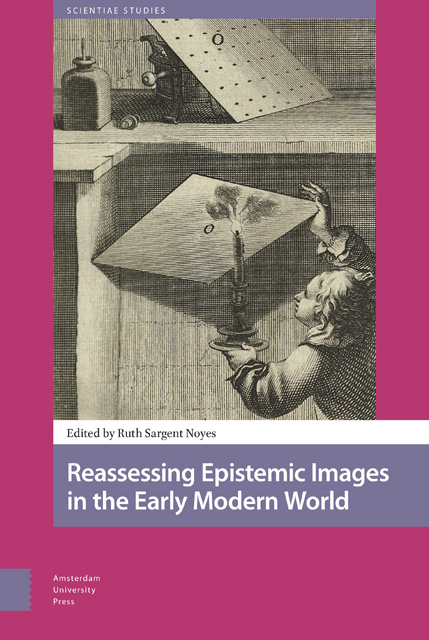Book contents
- Frontmatter
- Dedication
- Table of Contents
- 1 Prologue: For a Metaphorology of Engraving: From Epistemic Images to an Imaged Epistemology
- 2 Introduction: Pittura filosofica: Etching Galileo’s Sunspots and the Discursive Field of Early Modern Epistemic Images
- Part 1 Approaches to Print Matrices
- Part 2 Imprints as Instruments
- Part 3 Imprint, Knowledge, and Affect
- Bibliography
- Index
9 - The Hydraulics of the Soul: Jacobus Meilingius’s Allegorical Schemata
Published online by Cambridge University Press: 15 June 2023
- Frontmatter
- Dedication
- Table of Contents
- 1 Prologue: For a Metaphorology of Engraving: From Epistemic Images to an Imaged Epistemology
- 2 Introduction: Pittura filosofica: Etching Galileo’s Sunspots and the Discursive Field of Early Modern Epistemic Images
- Part 1 Approaches to Print Matrices
- Part 2 Imprints as Instruments
- Part 3 Imprint, Knowledge, and Affect
- Bibliography
- Index
Summary
Abstract
This case study considers a large single-sheet engraving by Jacobus Meilingius entitled Figurata Meditatio Microcosmi (1629). Its interlinking fountains and tiered flower vessel surrounded by allegorical figures suggest at first glance a moral theme, yet closer inspection proves this composition instead presents a faithful summary of the second-century physician Galen of Pergamum’s writings on the organization and elaboration of the human soul via the digestive, vascular, arterial and nervous systems. Beyond parsing the pneumatic theme, this essay identifies this print’s creator as a Dutch surgeon and argues his inspiration for this unique hydraulic metaphor for the soul was rooted in both medical and religious thought.
Keywords: print, Galen, soul, Fons Vitae, allegory
Enabled by the prosperity of printing technology and motivated by a “newly invigorated info-lust,” early modern artists, scientists, and theologians produced numerous images that used diagrammatic and pictorial strategies to condense theories or practices into easily digestible graphic forms. The resulting visual works were tools of transforming information into knowledge. They spatialized relationships, creating worlds in which physical and conceptual proximity were one and the same. They were instruments of pedagogy, championed by scholars such as Petrus Ramus and Johann Amos Comenius, who argued that comprehension could be better achieved and retained when the studied information was manifested spatially. Print designers, both renowned and unknown, found many ways of organizing these spatialized relationships, modeling them after trees or wheels, and applying them to diverse genres from politics to theology. Bold lines, textheavy chains or trodden footpaths – the map-like skeletons of schematic prints – guide beholders through these complex images, inviting them to traverse imaginatively the pictorial space as if it were real, perhaps by tracing their chosen routes with their fingers, feeling the subtle topographic ridge of ink on the printed page.
Despite their diversity and abundance, early modern single-page schemata, which exist somewhere between text and image, have long skirted the attentions of art historians. That they largely remain footnotes of visual culture can be attributed in part to their dry and convoluted nature, which has made them objects of study better suited to the histories of mathematics or science, who, however, focus primarily on the information represented rather than the manner of its representation.
- Type
- Chapter
- Information
- Reassessing Epistemic Images in the Early Modern World , pp. 201 - 220Publisher: Amsterdam University PressPrint publication year: 2022

